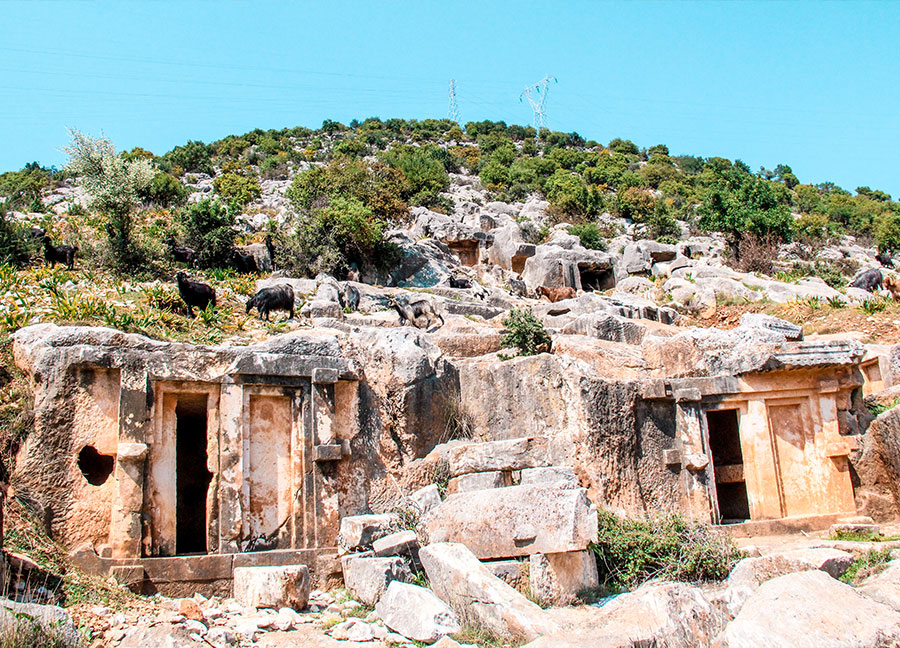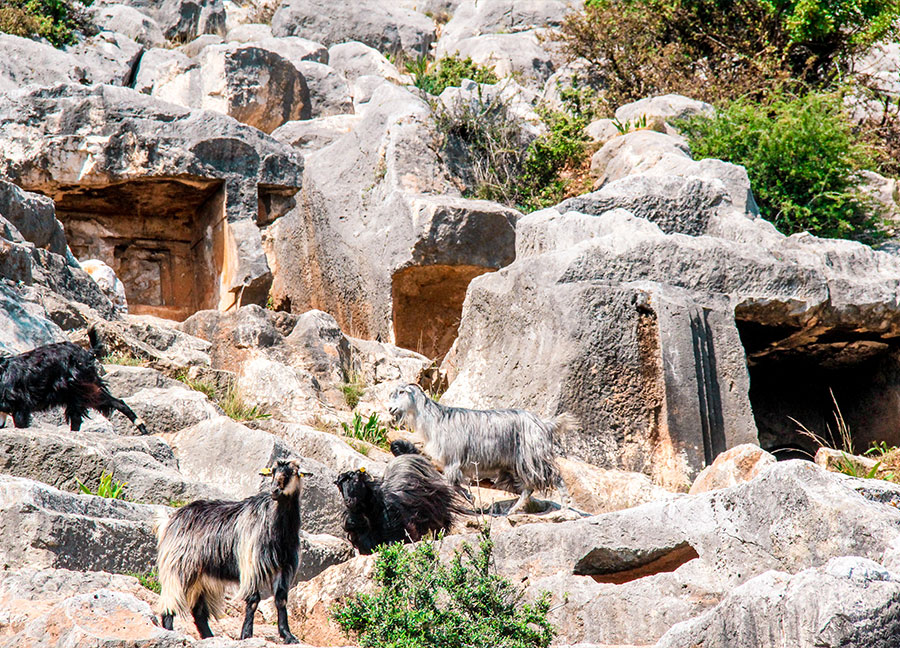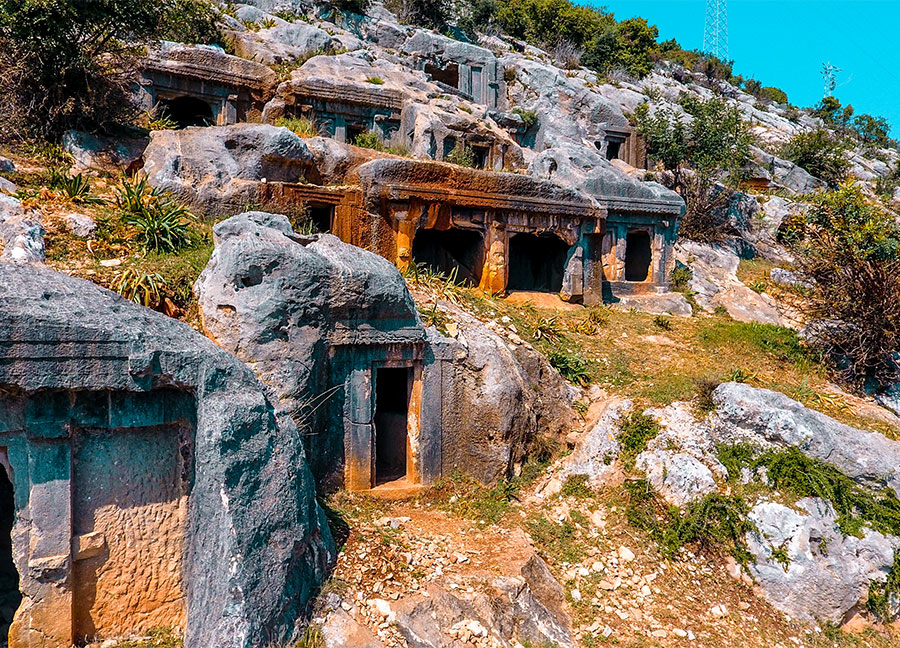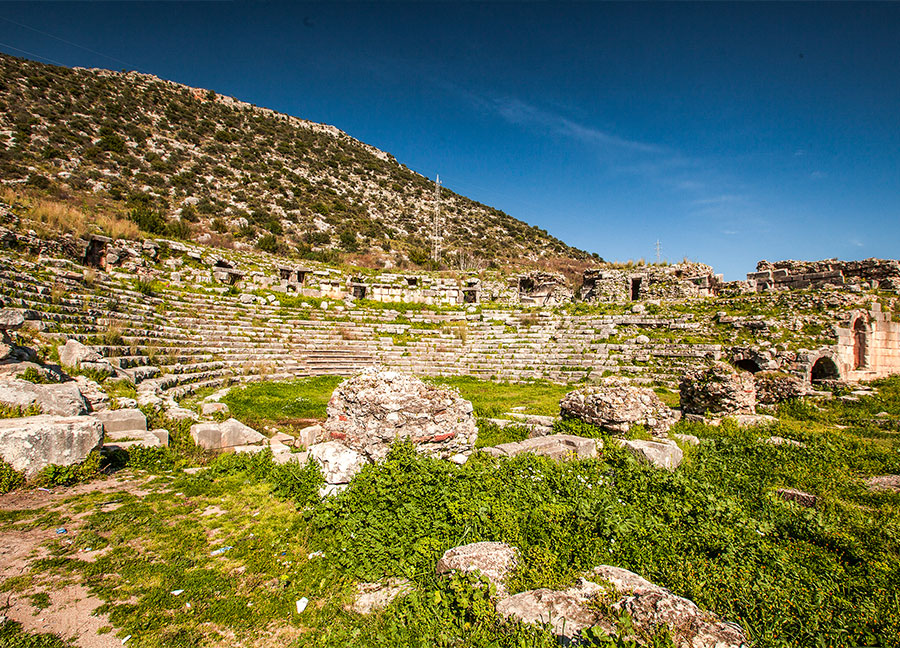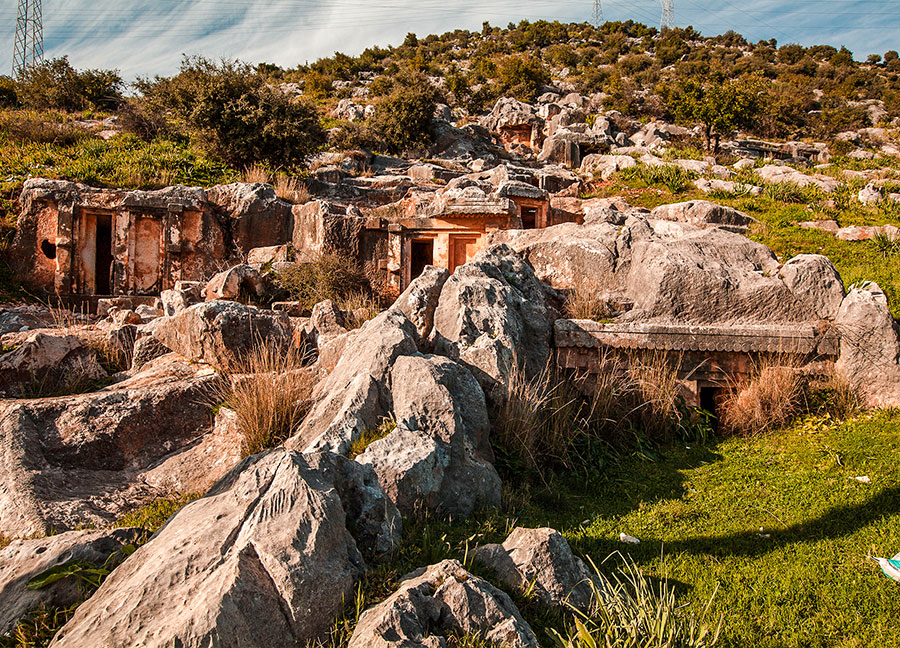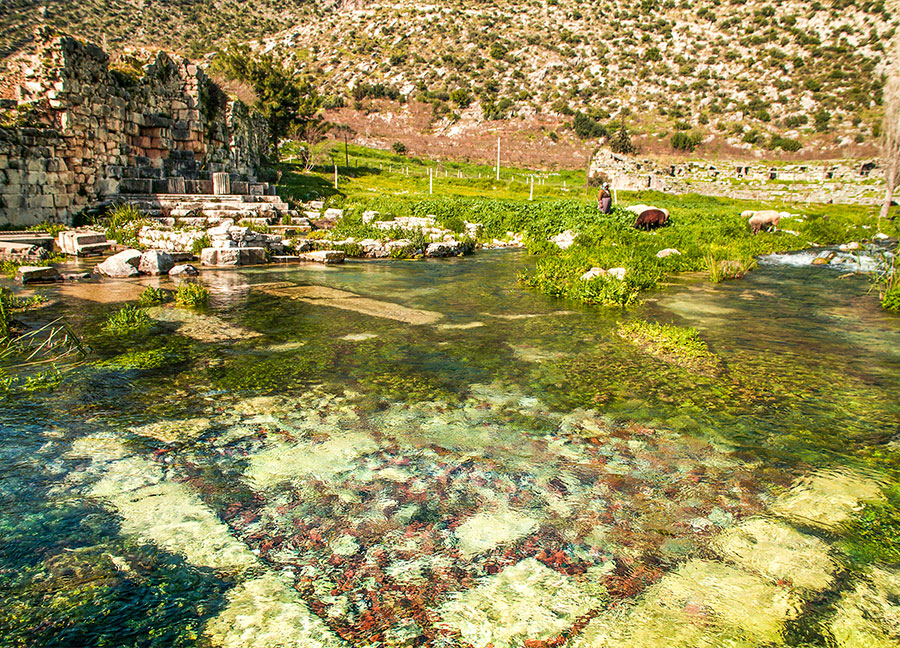Limyra Ancient City is approximately 25 km from the Finike district of Antalya and is within the borders of Turunçova and Sahilkent Towns. The city is founded on the skirts of a 1216-meter-high hill. It maintained its importance for many years due to its fertile lands and geographical location.
The most active time of the city, which has evidence of settlement since the 5th century BC, is the period of the Lycian King Perikle in the 4th century BC. It is understood that there was Persian sovereignty during the reign of the king, who was trying to establish the Lycian League and expand his sovereignty. Still, this sovereignty remained nominal and Limyra acted freely like other cities. The city, which lived in bright periods in the 2nd and 3rd centuries after Perikle, was rebuilt even though earthquakes destroyed it. Limyra was the episcopacy center while under the rule of the Byzantines. It was abandoned after the Arab raids in the 8th and 9th centuries.
The ancient ruins of different civilizations in the city, where archaeological excavations have been continuing since 1970, shed light on the region's history and brought very important finds to the Antalya Museum. Important examples of monumental architecture, the castle, the city wall, the cistern and the Byzantine Church, constitute only a small part of the ruins in the ancient city. Limyra has more than 400 rock tombs. It is one of the cities with the most rock tombs in the Lycian Region. Most of the tombs are known by name, with inscriptions written in Lycian. The large numbers indicate the size and population density of the city.
The acropolis in the north of the city consists of the inner castle and the lower castle. In the part where the acropolis reaches the plain, the theater building, originally from the Hellenistic Period, underwent a major repair in 141. Beyond the theater, there are walls, hillside houses, cisterns, rock tombs, a church, Xatabura Mausoleum and Perikle Heron. The mausoleum of King Perikle is important in that its style is similar to the Nereids Monument in Xanthos Ancient City, and its important pieces are exhibited in the Antalya Museum. There is a huge column head at the bottom of the road. An important structure in this section is the monumental tomb of Gaius Caesar, the adopted son of Emperor Augustus, which was built in the 4th year. To the east of the city, there is a colonnaded street and a bath complex. There are spring waters in the section where the stream flows in the middle of the columned street.


